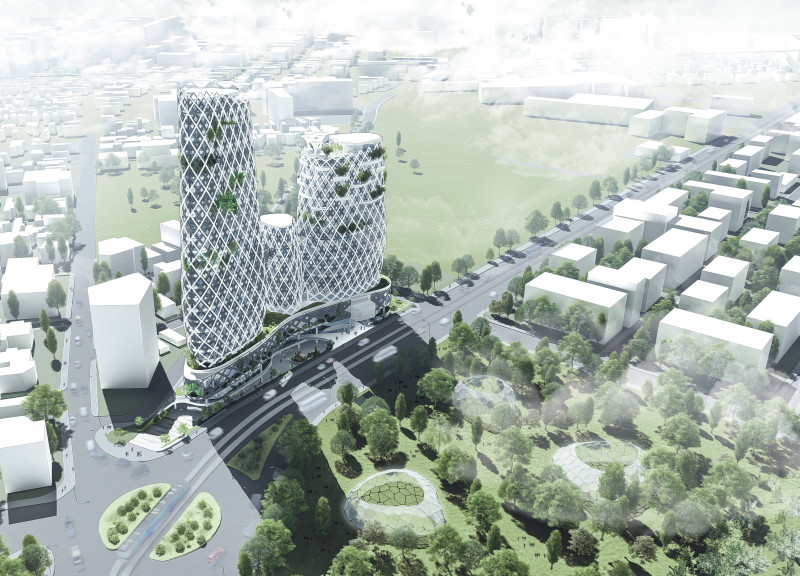5 key facts about this project
The project located in northern Bucharest offers a thoughtful response to the needs of a growing urban area. It emphasizes sustainability and a strong connection with the environment. The design consists of several volumes of different heights, allowing for a diverse range of uses while enhancing the surrounding urban landscape. By distributing architectural elements, the building improves spatial flow and creates dynamic interactions among its parts.
Façade Integration
The façade is a key element in the design, showcasing greenhouses that provide both beauty and function. These greenhouses help control the amount of sunlight entering the building while also improving its thermal performance. Integrating natural features not only enhances visual appeal but also encourages occupants to connect with their surroundings in a more meaningful way.
Spatial Configuration
Accessibility is a primary consideration in the layout. Generous vertical circulation spaces make movement between levels easy and promote interaction. Public areas, like exhibition spaces, conference rooms, and dining areas, are strategically placed throughout the building. This arrangement supports a variety of activities, catering to both community and business needs.
Panel Design and Performance
The façade includes panels with varying opacity, designed to respond to different sunlight conditions throughout the day. This thoughtful design allows for effective heat management while also maintaining views. The mix of materials enhances thermal performance and adds character to the building, creating an engaging visual experience.
Structural Framework
A strong framework of beams, columns, and reinforced concrete slabs provides stability and durability. The design incorporates vertical cores and radial beams to improve the overall structural integrity. This creates open spaces that can adapt to various functions. The result is a balanced structure that delivers both strength and visual interest.
Attention to detail is evident in the integration of green spaces, which extend into the interior areas. Vertical gardens act as natural air filters, improving air quality while enhancing the ambiance. This connection between indoor and outdoor spaces fosters a sense of well-being and invites occupants to appreciate the natural environment within an urban setting.



























